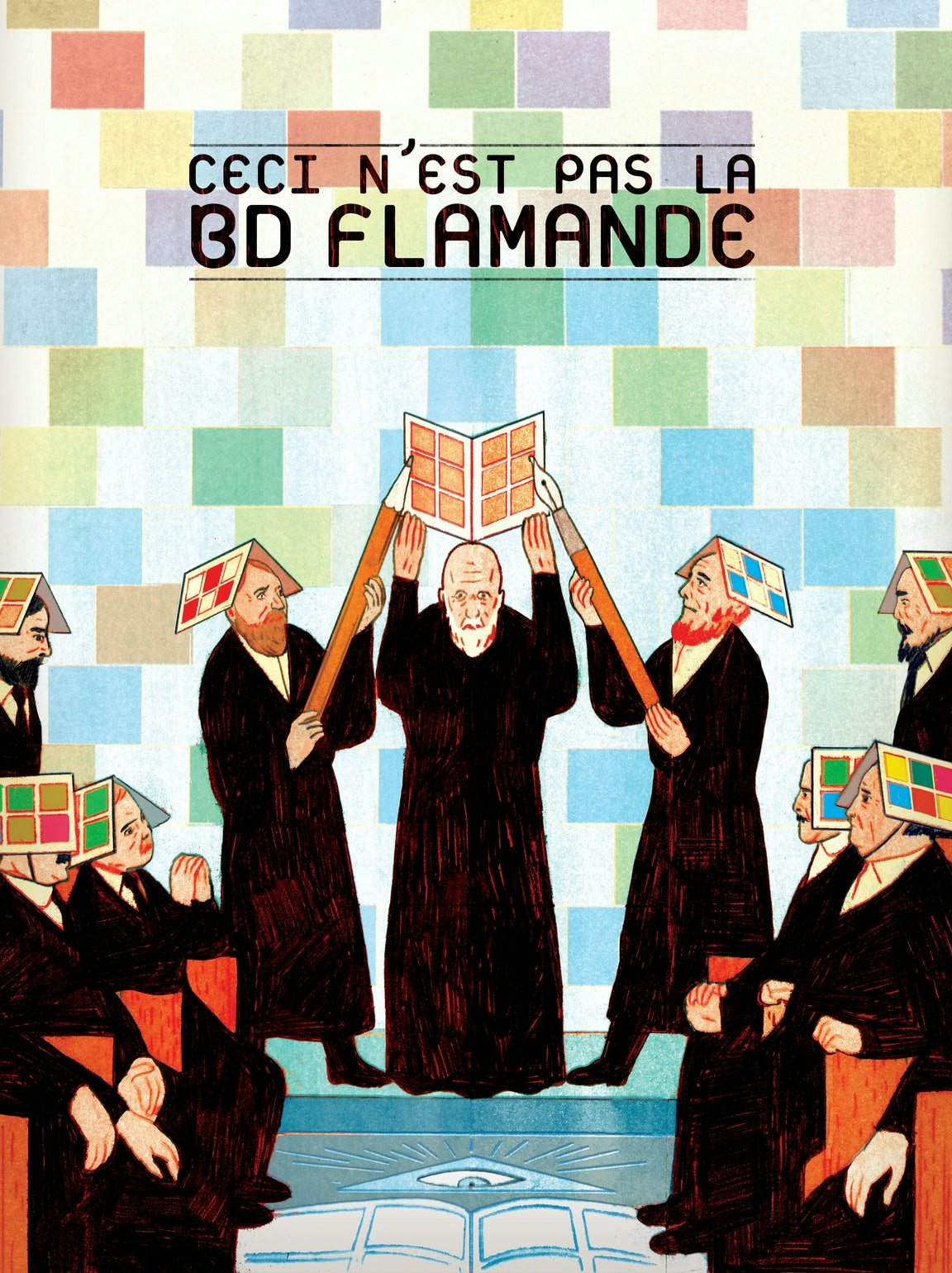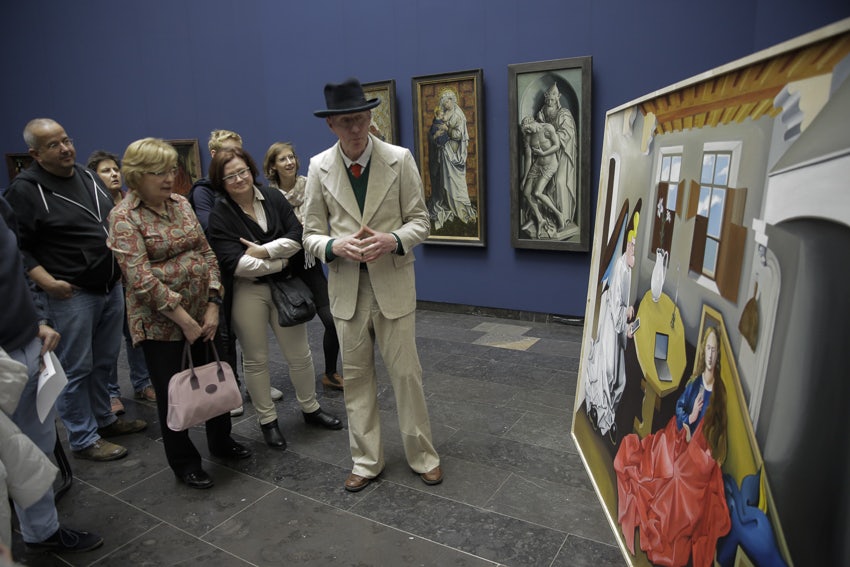Essay on graphic novels
Readers in Flanders have grown up surrounded by comic strips in newspapers, magazines and elsewhere, from traditional family cartoons such as Jommeke by Jef Nys and Suske en Wiske by Willy Vandersteen to absurdist gag-based comics such as Cowboy Henk by Kamagurka and Herr Seele. Comics still regularly top the best-seller lists in Flanders.
Just like authors in other genres, Flemish comic-book authors can apply to Flanders Literature for a work grant, funding that allows them to devote more time to their artistic and literary work. Flanders Literature also helps publishers with the production costs of outstanding graphic novels, and provides financial support for organisers of comics-related events in Flanders and for creators of comic-book magazines. The organisation’s promotional efforts abroad, too, focus on the more artistic and literary varieties of the genre.
Traditionally, Flemish comic-book culture was dominated by long-running comic series with an unchanging cast of characters. Most of those comics, initially devised as gag strips or series in newspapers and magazines, are now facing the same problems as the traditional print media in which they are published. For more than half a century, annual compilation albums of such comic strips were one of the main sources of entertainment for young people in Flanders, with print runs of more than 400,000 copies. Today, comics are part of a much wider entertainment context, competing with films, games, animation shorts, the internet, social media, and so on.
ARTISTIC COMIC BOOKS
Since the early 2000s, a culture of artistic comic books has emerged that is targeted primarily at an adult audience and no longer ruled by the limitations imposed by newspapers or magazines. Many of these books feature one-off stories that vary widely in length and artistic technique, rather than following a standard format. However, this is not to say that alternative comics for an adult audience did not exist before. In the 70s, the Antwerp comic-art collective Ercola published several issues of ‘Spruit’ magazine, and artists like Ever Meulen and the duo Kamagurka and Herr Seele have been publishing internationally for years, in magazines such as Art Spiegelman and Françoise Mouly’s ‘Raw’.
In the past fifteen years, a culture of artistic comic books has emerged that is targeted primarily at an adult audience.
Others, such as Marvano, who wrote ‘The Forever War’ (De Eeuwige Oorlog) and ‘The Jewish Brigade’ (De Joodse brigade), and Griffo, who wrote ‘SOS Happiness’ (S.O.S. Geluk) and ‘Golden Dogs’, were producing graphic novels for major French-language publishers such as Dupuis, Dargaud and Casterman long before the genre reached the Dutch-language market. And they continue to do so, along with Jan Bosschaert, who has made the graphic novel 'Jaguar' based on a story written by Jean Dufaux and is currently working with leading scriptwriter Zidrou, and Ken Broeders, whose ‘Apostata’ is a painted comic series about the Romans.
So many artists venturing so far from the mainstream is a relatively recent phenomenon, though. They saw the serial comic strip as dead and buried – the name of the game was no longer serialised comics in magazines, but graphic novels.
COMICS FESTIVAL IN ANGOULÊME 2009

Representing Flanders as the guest of honour at the Angoulême International Comics Festival in 2009, the Flemish Literature Fund (now Flanders Literature) presented a special programme including an exhibition: ‘Ceci n’est pas la BD flamande’. This brought the work of 20 Flemish comic-book creators to the attention of publishers from France and the rest of the world. It was a turning point for many of these authors, launching the international careers of Judith Vanistendael (When David Lost His Voice, Dance by the Light of the Moon), Brecht Evens (Panther, The Making Of, The Wrong Place), Randall Casaer (Sleepyheads) and Olivier Schrauwen (Arsène Schrauwen, My Boy, Mowgli’s Mirror).
Some of these artists have been nominated for the Eisner Award in the USA and for the Prize for Best Album at the Angoulême International Comics Festival, including Willy Linthout, whose Urbanus comic (starring the singer and comedian of the same name) has been hugely popular in Belgium for decades, and who broke through internationally with Years of the Elephant (Jaren van de Olifant), a graphic novel about his attempts to come to terms with the suicide of his only son.
OVER 100 TRANSLATIONS IN 15 LANGUAGES
Since 2007, Flanders Literature has supported over 100 translations of Flemish graphic novels in over 15 languages. These include works by Vanistendael, Evens, Casaer and Schrauwen, and also Ben Gijsemans, Luc Cromheecke, Simon Spruyt, Wauter Mannaert, Nix, Jeroen Janssen, Pieter De Poortere, Frodo De Decker, Serge Baeken, Michaël Olbrechts, to name just a few. There has been a certain lack of female cartoonists, but the tide is turning. In recent years, graduates of the LUCA School of Arts in Brussels have included Charlotte Dumortier, Inne Haine, Shamisa Debroey and Delphine Frantzen, while Judith Vanistendael, Ephameron and Ilah currently are part of the teaching staff of its practical Narrative Arts course.
Meanwhile, even traditional comics seem to be reinventing themselves in Flanders. Nix’s Kinky & Cosy and Pieter de Poortere’s Dickie are comic strips that appear in newspapers and magazines, but while these comics allude to the traditional gag cartoon for children, they are clearly addressing an adult audience. It is interesting to note that both Nix and Pieter de Poortere are working on animated versions of their comic strips, as traditional comics increasingly step outside the boundaries of the medium. Publishers of traditional children’s comics are also thinking ahead and outside of the box. Though filmed or animated adaptations often prove too expensive, they have started producing new spin-off comics based on some of their best-known characters: Amoras is a new angle on the familiar Suske en Wiske stories, aimed at adults this time, while J-Rom, based on the Jerom character from ‘Suske en Wiske’, sees him getting a dramatic makeover for a new audience. And there are plenty more interesting side ventures to come.
MAINSTREAM VS. UNDERGROUND
Herr Seele and Kamagurka, who have worked for Flemish and Dutch mainstream media for decades, continue to attract the attention of international underground publishers with their absurdist comics. They have gained a following at home, too, as can be seen in the work of Steve Michiels and Brecht Vandenbroucke among others.

And though making a living as a comic artist in the small Dutch-language market is no easy task, the profession still attracts many young artists. But while in the past you either had to work at a studio to learn the craft from an old hand or make it on your own, art academies in Brussels and Ghent now offer courses in comic art, which attract many international students. Attention is also paid to the subject in other departments, such as animation shorts and graphic design. These courses focus on the students’ artistic vision and development rather than on the demands of the market.
The important role played by Flemish publishers should not be underestimated here.
All this goes to show how deeply embedded comic strips are in Flemish culture and society. The important role played by Flemish publishers should not be underestimated here. Many years ago, small independent publishers such as Bries and Oogachtend already pioneered by publishing daring, artistic material by young and talented artists. With their eye for quality and attention to detail, they created stunning works. Other Flemish comic-book publishers, such as Vrijdag, Lannoo, Standaard Uitgeverij and Ballon Media, have entered the graphic novel game as well, the latter even by establishing a dedicated imprint, Blloan. But the Dutch-language market is still a small one, and so Flanders Literature, working closely with Flemish publishers, continues to invest in the promotion of our many talented comic book authors, both at home and abroad.
Please explore our website to find out more!
